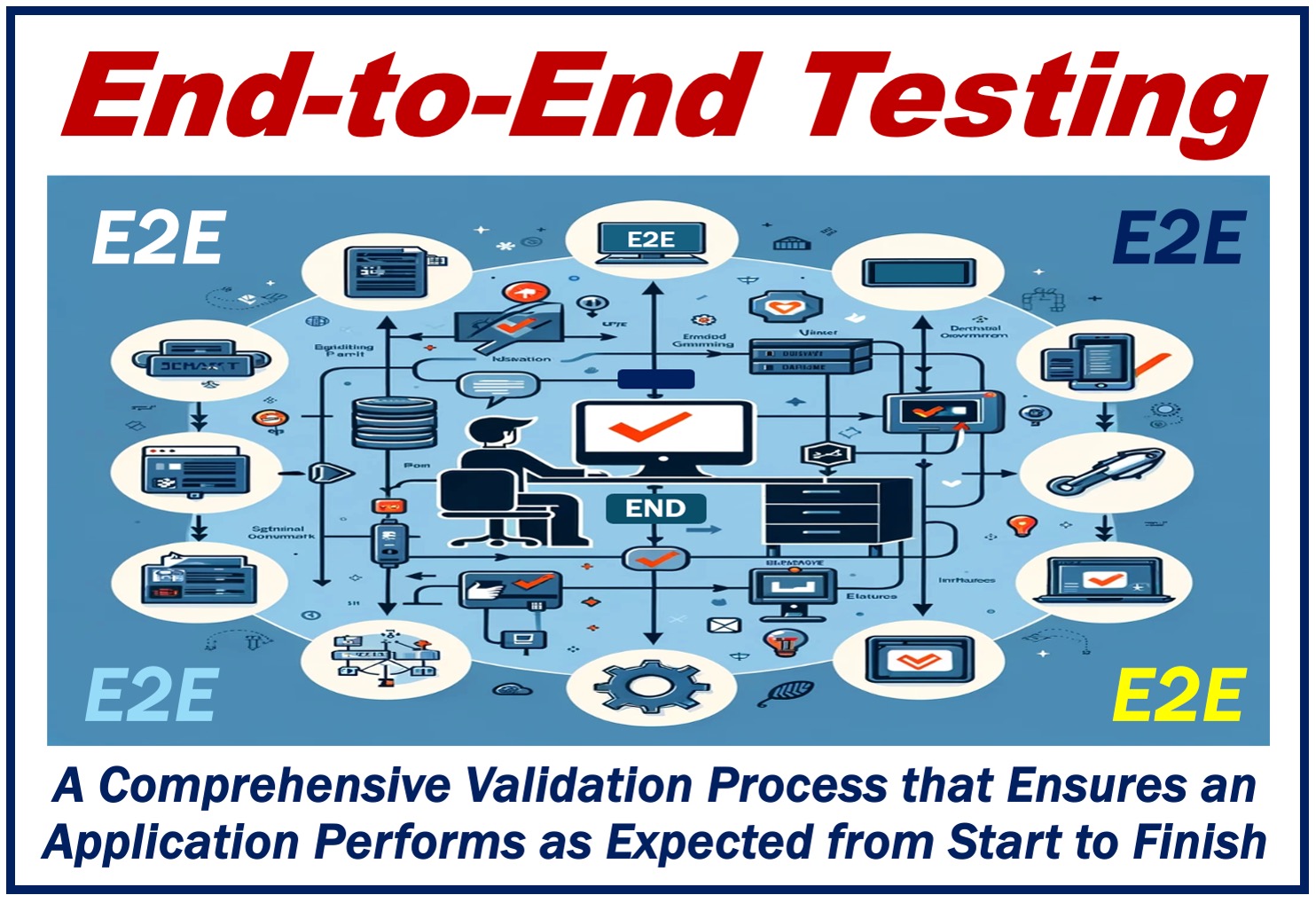End-to-end (E2E) Testing is a software development process technique used to make sure that an application operates properly from start to finish. It simulates real-world scenarios to validate the system’s overall functionality and its interaction with other systems, databases, and interfaces.
End-to-end testing checks the application from the user’s perspective.
Microsoft’s Engineering Fundamentals Playbook says the following about E2E testing:
“End-to-end (E2E) testing is a Software testing methodology to test a functional and data application flow consisting of several sub-systems working together from start to end.”
E2E testing, unit testing, & integration testing
E2E testing, at its core, examines the complete flow of an application, from beginning to end, to detect system dependencies and ensure that data is passing through all components as intended.
It contrasts with unit testing, which examines the individual parts of an application. It is also unlike integration testing, which checks how different parts work together.
E2E testing focuses on the entire application in a simulation that mimics real-world usage.
Main advantage
E2E testing’s main benefit is its ability to identify system-wide problems or faults that might not be apparent in other types of testing.
It can, for example, uncover problems with the application’s database management, network communication, and interaction with other applications or services.
This comprehensive approach helps ensure that the application will perform as expected by the end user, providing an efficient and seamless user experience.

E2E testing – implementation
Implementing this type of testing involves creating test scenarios that cover all possible user interactions with the application. These scenarios are used to conduct tests that simulate real user behaviors, such as retrieving data, logging in, or processing transactions.
With this method, testers can discover any discrepancies between actual and expected outcomes. They can also identify bugs and performance issues that need to be resolved.
Complex and time-consuming
However, because of its comprehensive nature and the need for extensive scenario planning, E2E testing may be complex and time-consuming.
Even so, the benefits of E2E testing – particularly its ability to ensure a top-quality user experience – make it a crucial part of the software development lifecycle.
Summary
E2E testing is a vital process that helps us create more reliable and user-friendly applications. It also ensures that applications meet technical specifications by simulating real-world user experiences.
